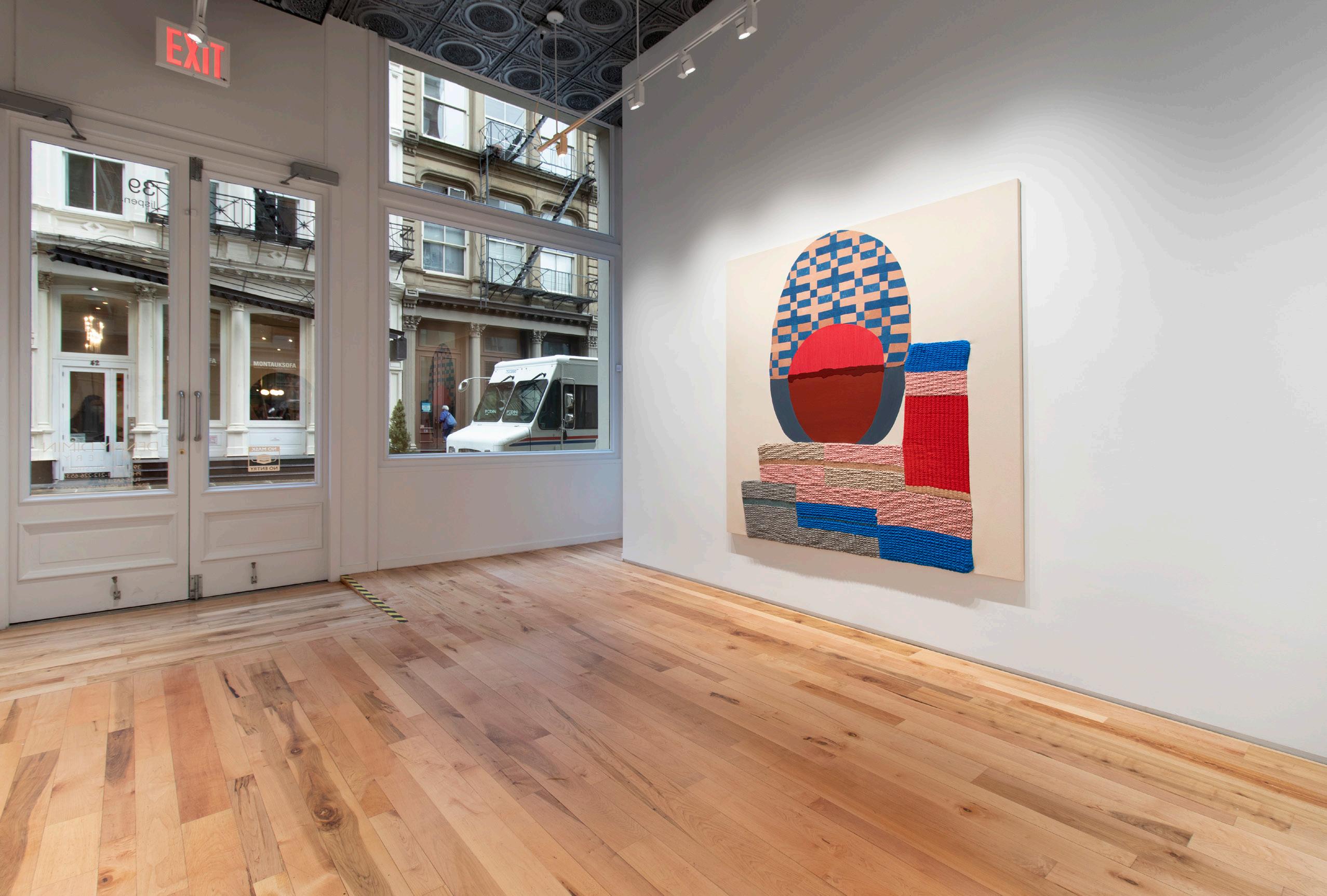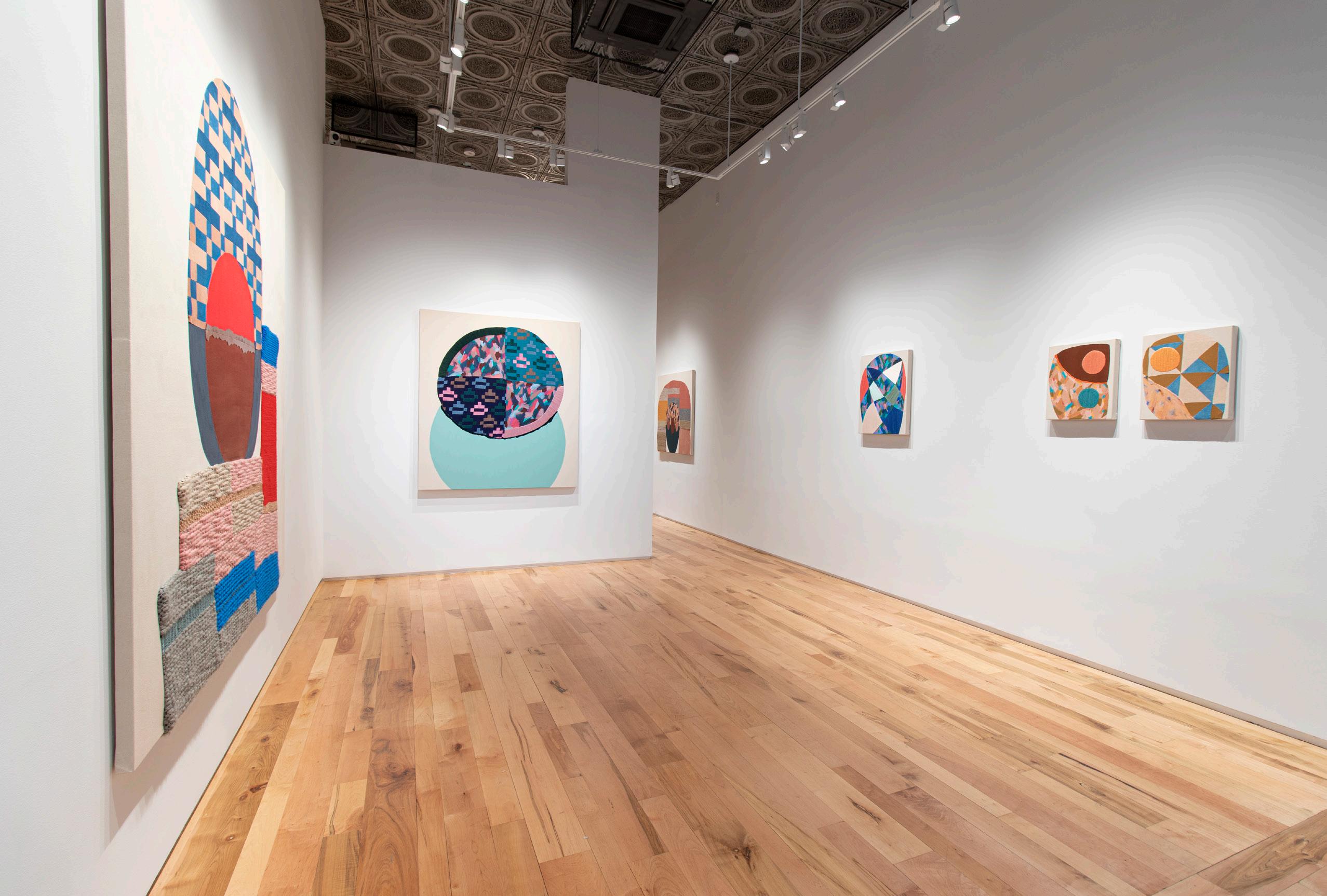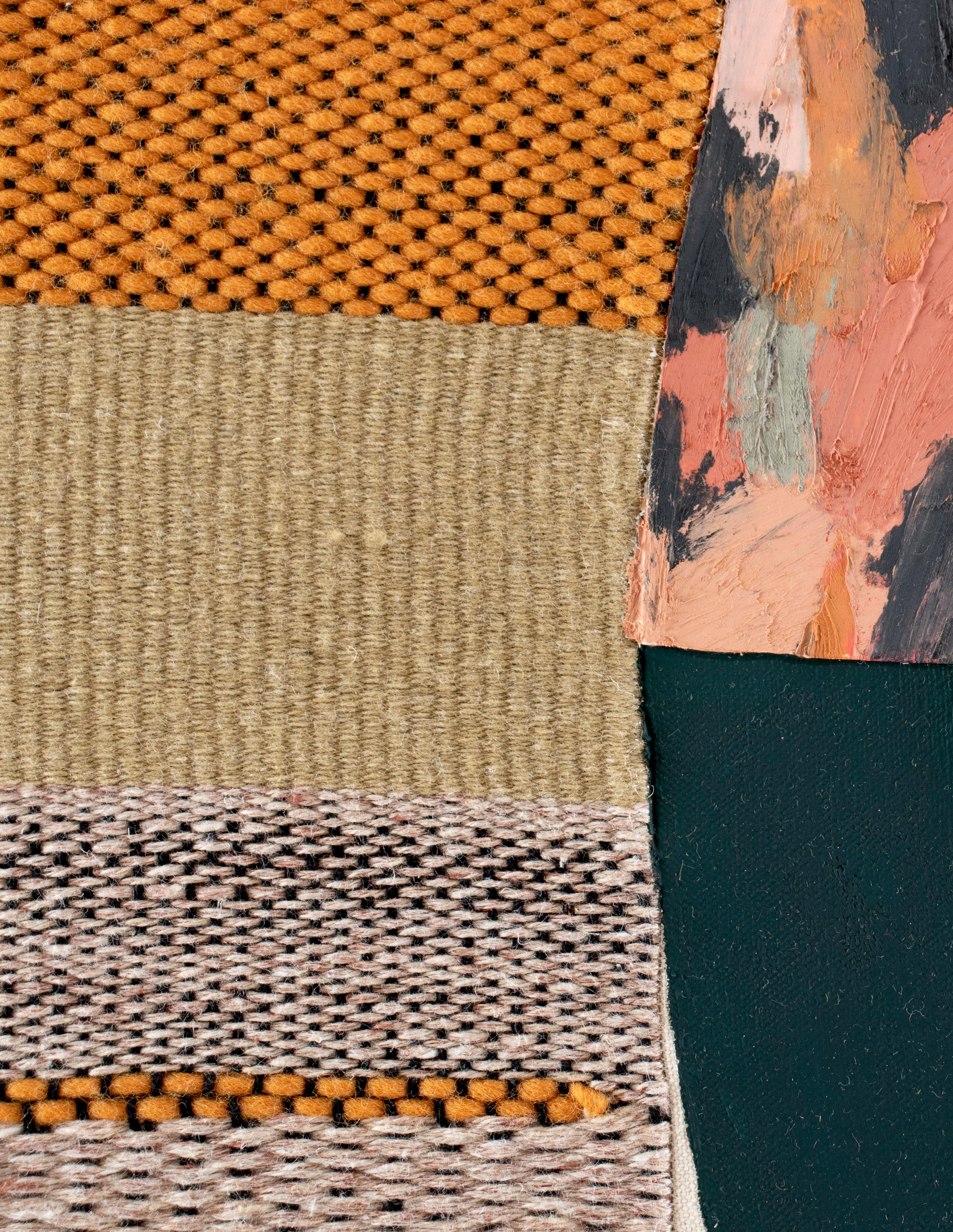
2 minute read
AMANDA VALDEZ GRATITUDE
April 2 - May 15, 2021
DENNY DIMIN GALLERY


For Amanda and Elizabeth
Knowing the past is as astonishing a performance as knowing the stars. Astronomers look only at old light. There is no other light for them to look at. This old light of dead or distant stars was emitted long ago and it reaches us only in the present. Many historical events, like astronomical bodies, also occur long before they appear, such as secret treaties; aide-memories, or important works of art made for ruling personages. The physical substance of these documents often reach qualified observers only centuries or millennia after the event. Hence astronomers and historians have this in common: both are concerned with appearances noted in the present but occurring in the past.1
-- George Kubler, The Shape of Time
Amanda Valdez is a seeker and problem solver. She gathers colors, shapes, and patterns from across different times, cultures, and places, creating a complex syncretic language of forms using diverse media like gouache, oil stick, embroidery, quilting, and weaving, sometimes all at once. Valdez is an avid researcher and has spent years investigating topics as far-ranging as Pagan iconography in the Renaissance, textile production and patterning of Islamic art in the Ottoman Empire, Guatemalan weaving made on backstrap looms, modernist Bauhaus textiles, and the quilts of Gee’s Bend. She “loves the history of the world, the history of making, the history of hands” and says that she often thinks of these [objects] “as vehicles for time travel” that allow her to “connect back to somebody who was making something 300 years ago.”2
Valdez’s confident and complex paintings and drawings, which range from the size of a small sheet of paper to a tall human being with widely outstretched arms, are paradoxically both expressionist and conceptual; they unabashedly embrace a wide range of styles and techniques that build on modernist traditions, feminist art, the Pattern and Decoration movement, and the shapes and colors that she finds in nature and the built environment. Her works touch upon a dazzling range of aesthetic languages from different cultures and time periods that coalesce into paintings that incorporate replication, variation, and invention. Despite the many touchpoints, the works are disciplined and rigorous, offering tactile pictures that reveal creative problem solving around compositional complexity and innovative uses of color connected to our physical, emotional, sensual, and psychological experiences.
Valdez attended the School of the Art Institute of Chicago (SAIC) from 2005 to 2007. As an undergraduate there, she studied Joseph Albers’ color theory and gained a technical understanding in that class; the “real contention,” she recalls, “was that it wasn’t color theory.... It was color observation, it was color reality.” She also drew on her own intuitive sense of color and her personal relationship to it, something she had been connecting to since childhood.
At the SAIC, Valdez also studied with Michelle Grabner, an artist



